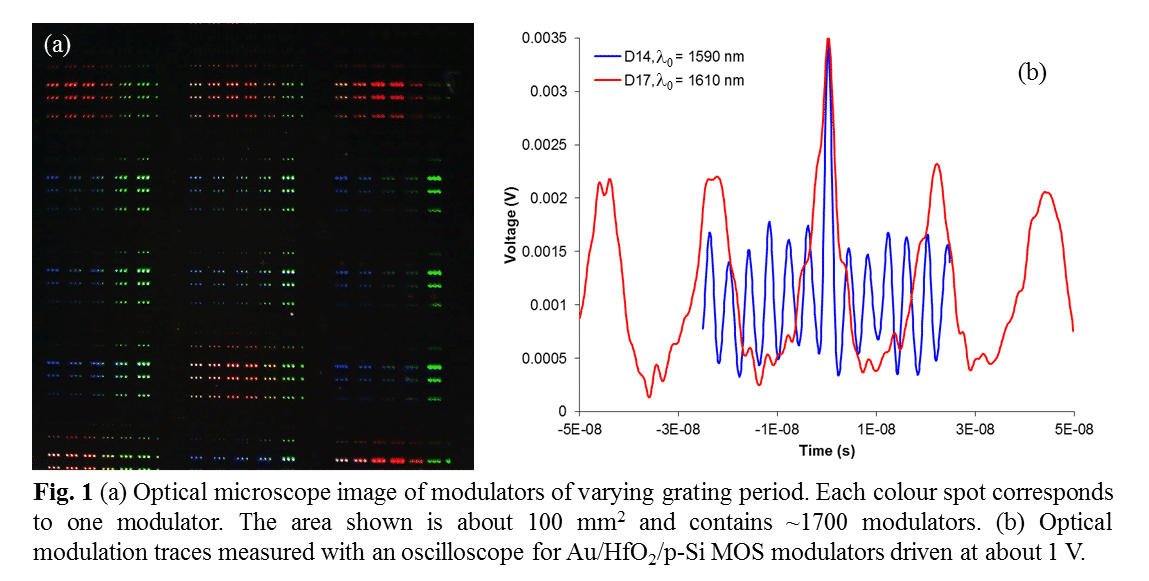
Plasmonic Metal-Oxide-Semiconductor Reflection Modulators on Siliconn
We propose a plasmonic surface that produces an electrically-controlled reflectance as a high-speed optical intensity modulator. The device is conceived as a metal-oxide-semiconductor capacitor on silicon with its metal nanostructured as a thin patch bearing a contiguous nanoscale grating. The metal structure serves multiple functions: as a driving electrode, as a grating coupler for perpendicularly-incident p-polarised light to surface plasmons, and as a waveguide for supporting surface plasmons on the underside of the patch. Modulation is produced by charging and discharging the capacitor and exploiting the carrier refraction effect in silicon along with the high sensitivity of strongly confined surface plasmons to refractive index perturbations in silicon. The area of the modulator is set by the area of the incident beam, leading to a very compact device for a strongly-focused beam (~2.5 mm in diameter). The modulator can operate over a broad electrical bandwidth with a modulation depth of 3 to 6%, a loss of 3 to 4 dB, and an optical bandwidth of about 50 nm. About 1000 modulators can be integrated and excited independently over a 50 mm2 area producing an aggregate electro-optic modulation rate in excess of 1 Tb/s (Fig. 1(a)). We demonstrate modulators operating at telecommunications wavelengths, fabricated as nanostructured Au/HfO2/p-Si capacitors (Fig. 1(b)) [1,2]. Applications such as short-reach data communications, massively-parallel data output for optical interconnects to chips, and functional wafer probing for compliance testing post-manufacturing are envisaged. Packaging can be simplified because butt-coupling and propagation through end-facets are not required, and simpler packages suitable for surface devices can be used. The modulators break conceptually from waveguide-based devices, and belong to the same class of devices as surface photodetectors and vertical cavity surface-emitting lasers.
References:
[1] Olivieri, A.; Chen, C; Hassan, S.; Lisicka-Skrzek, E.; Tait, R. N.; Berini, P.; "Plasmonic nanostructured metal-oxide-semiconductor reflection modulators," submitted.
[2] Hassan, S.; Lisicka-Skrzek, E.; Olivieri, A.; Tait, R. N.; Berini, P. Nanotechnology, 25 (2014) 495202.

Powered by Eventact EMS